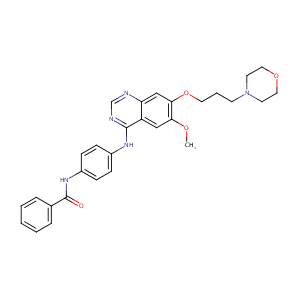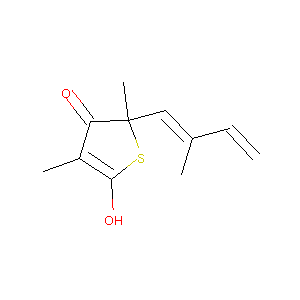| 1 |
Loss of function mutations in VARS encoding cytoplasmic valyl-tRNA synthetase cause microcephaly, seizures, and progressive cerebral atrophy.Hum Genet. 2018 Apr;137(4):293-303. doi: 10.1007/s00439-018-1882-3. Epub 2018 Apr 24.
|
| 2 |
URL: http://www.guidetopharmacology.org Nucleic Acids Res. 2015 Oct 12. pii: gkv1037. The IUPHAR/BPS Guide to PHARMACOLOGY in 2016: towards curated quantitative interactions between 1300 protein targets and 6000 ligands. (Ligand id: 8353).
|
| 3 |
Therapeutic target database update 2012: a resource for facilitating target-oriented drug discovery. Nucleic Acids Res. 2012 Jan;40(Database issue):D1128-36.
|
| 4 |
The ChEMBL database in 2017. Nucleic Acids Res. 2017 Jan 4;45(D1):D945-D954.
|
| 5 |
Accurate prediction of the relative potencies of members of a series of kinase inhibitors using molecular docking and MM-GBSA scoring. J Med Chem. 2006 Aug 10;49(16):4805-8.
|
| 6 |
PLK1 targets NOTCH1 during DNA damage and mitotic progression. J Biol Chem. 2019 Nov 22;294(47):17941-17950. doi: 10.1074/jbc.RA119.009881. Epub 2019 Oct 9.
|
| 7 |
DNA double-strand breaks and Aurora B mislocalization induced by exposure of early mitotic cells to H(2)O(2) appear to increase chromatin bridges and resultant cytokinesis failure. Free Radic Biol Med. 2017 Jul;108:129-145. doi: 10.1016/j.freeradbiomed.2017.03.025. Epub 2017 Mar 24.
|
| 8 |
Novel molecular targets for antimalarial drug development. Chem Biol Drug Des. 2008 Apr;71(4):287-97.
|
| 9 |
The apicoplast as an antimalarial drug target. Drug Resist Updat. 2001 Jun;4(3):145-51.
|
| 10 |
Recurrent recessive mutation in deoxyguanosine kinase causes idiopathic noncirrhotic portal hypertension.Hepatology. 2016 Jun;63(6):1977-86. doi: 10.1002/hep.28499. Epub 2016 Mar 31.
|
|
|
|
|
|
|


